Huntingdonshire Day is celebrated on 25th April, the birthday of Oliver Cromwell. In celebration, we present our Seven Wonders of Huntingdonshire.
Huntingdonshire is roughly rhomboid in shape, centred on Huntingdon, and the meeting of the Great North Road (A1) and the route from the east coast to the Midland towns (A14). The four towns of Huntingdonshire are St Neots, St Ives, Ramsey and Huntingdon itself; three mediæval abbey towns and the fortress of the Ouse.
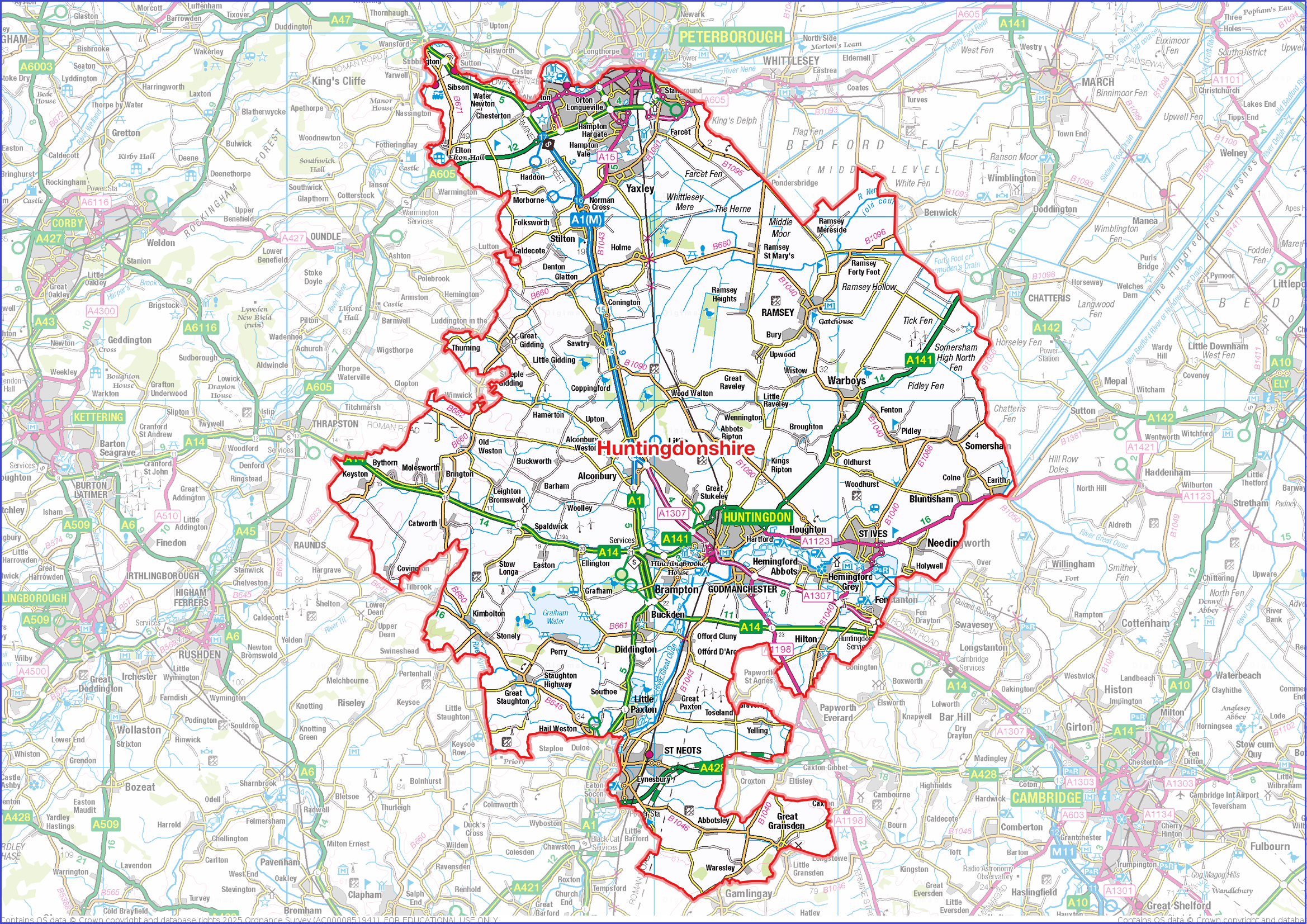
The county is almost entirely flat. The south of the county is a network of villages surrounded by mixed farming. North of Huntingdon the land lies within the Great Fen, long since drained and converted into broad, fertile arable fields. The main town of the fens is Ramsey. The Great Ouse enters Huntingdonshire at St Neots, the largest town in the county, and flows past Huntingdon and St Ives until the border with Cambridgeshire.
1. Cromwell Museum, Huntingdon
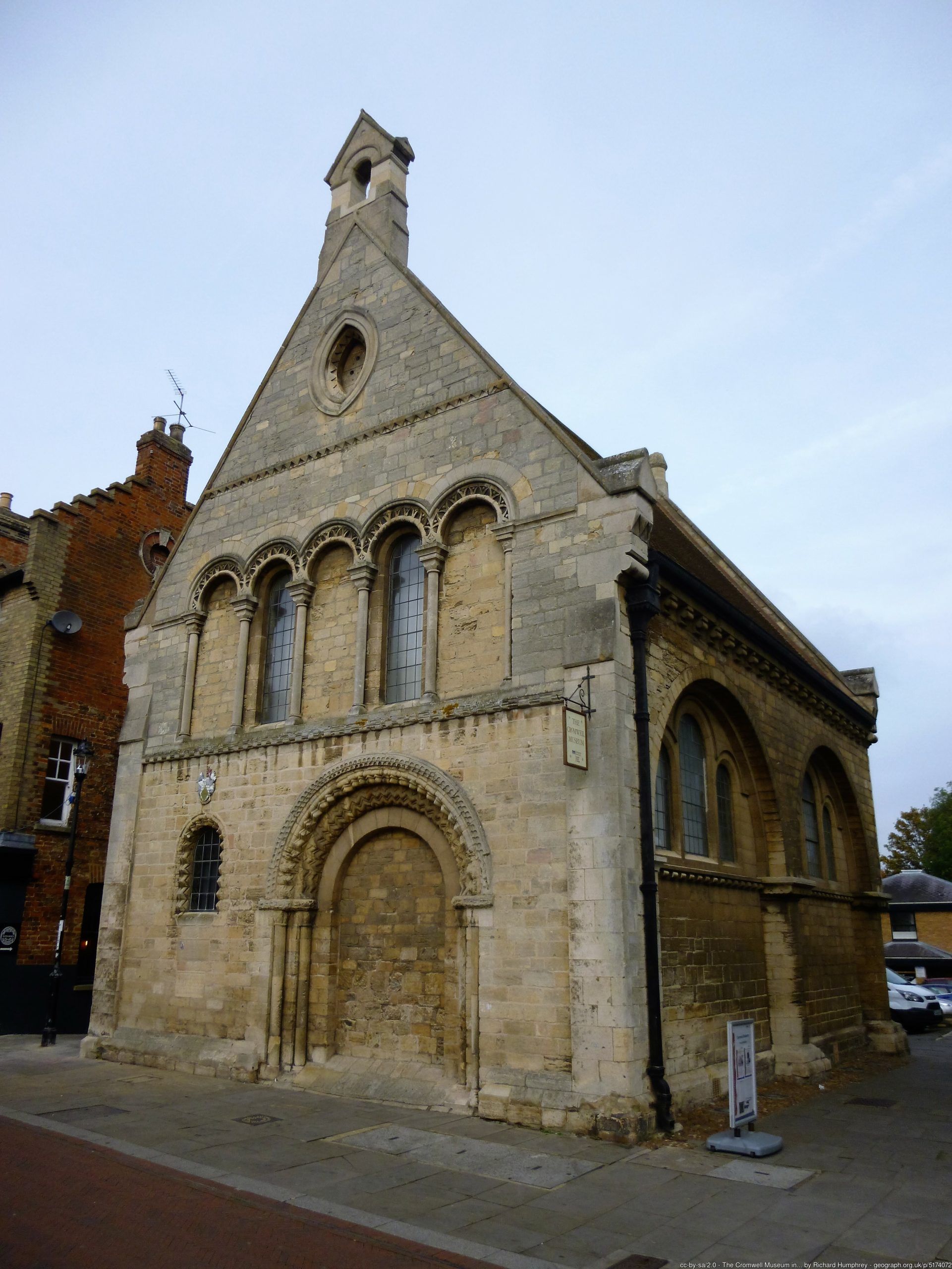
Oliver Cromwell was born in Huntingdon in 1599 and lived here for more than half his life. The Cromwell Museum contains collections exploring his life. The museum is housed in the old grammar school which Cromwell attended, later also attended by Samuel Pepys. The building itself dates from the 12th century when it began as an infirmary hall of the Hospital of St John the Baptist, becoming a school after the Dissolution. It has housed the Cromwell museum since the 1950s.
2. Ramsey Abbey
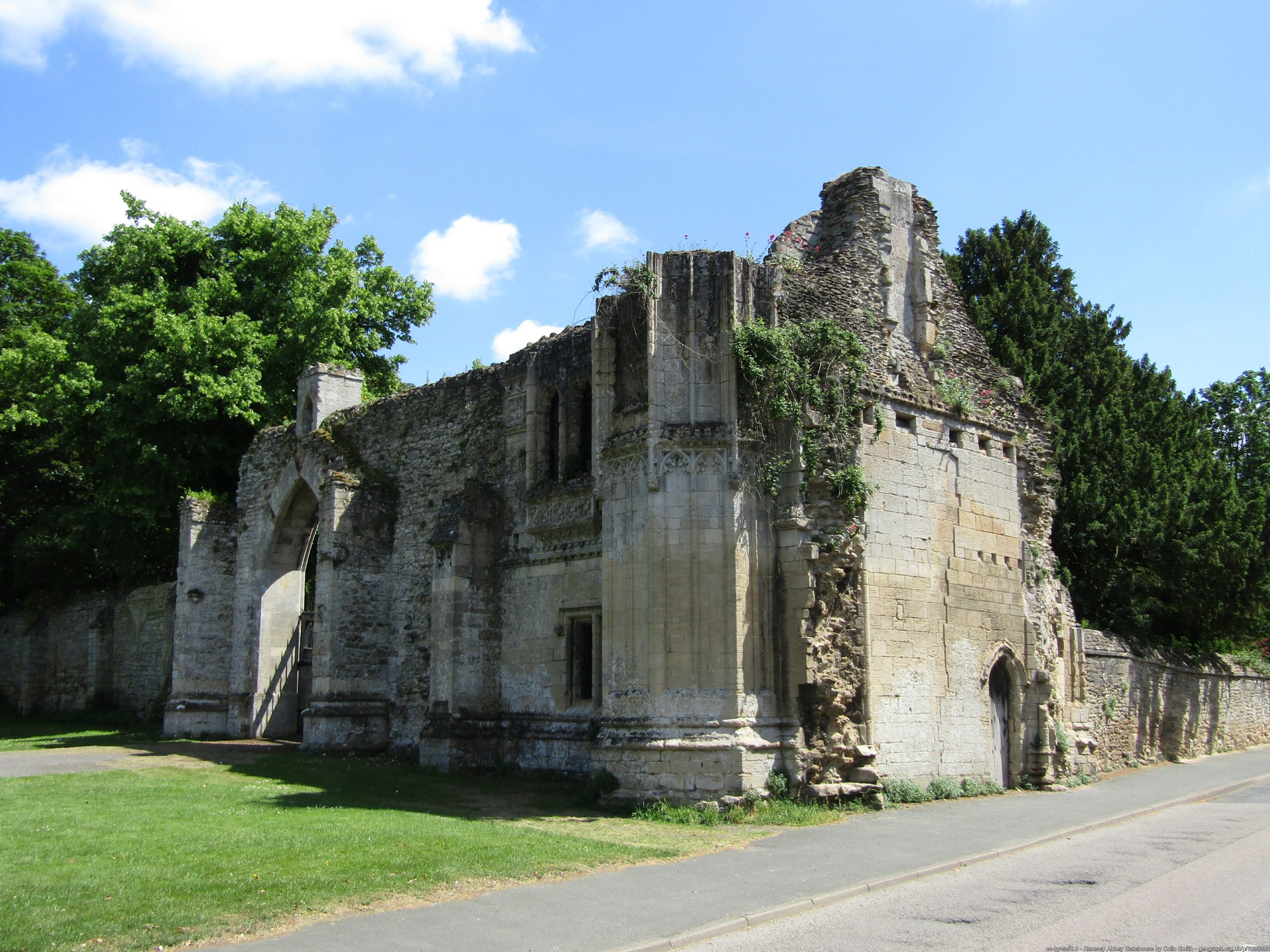
Ramsey Abbey was founded in 969 by Oswald, Bishop of Worcester. It became one of the richest foundations in England and a major landowner in Huntingdonshire. Much of the abbey was destroyed after its dissolution in 1540, with three notably survivals: the 12th-century Church of St Thomas à Becket, the ruined 15th century Perpendicular Gothic Abbey Gatehouse, and Ramsey Abbey House, built on the site of the abbey and incorporating parts of it.
3. Houghton Mill
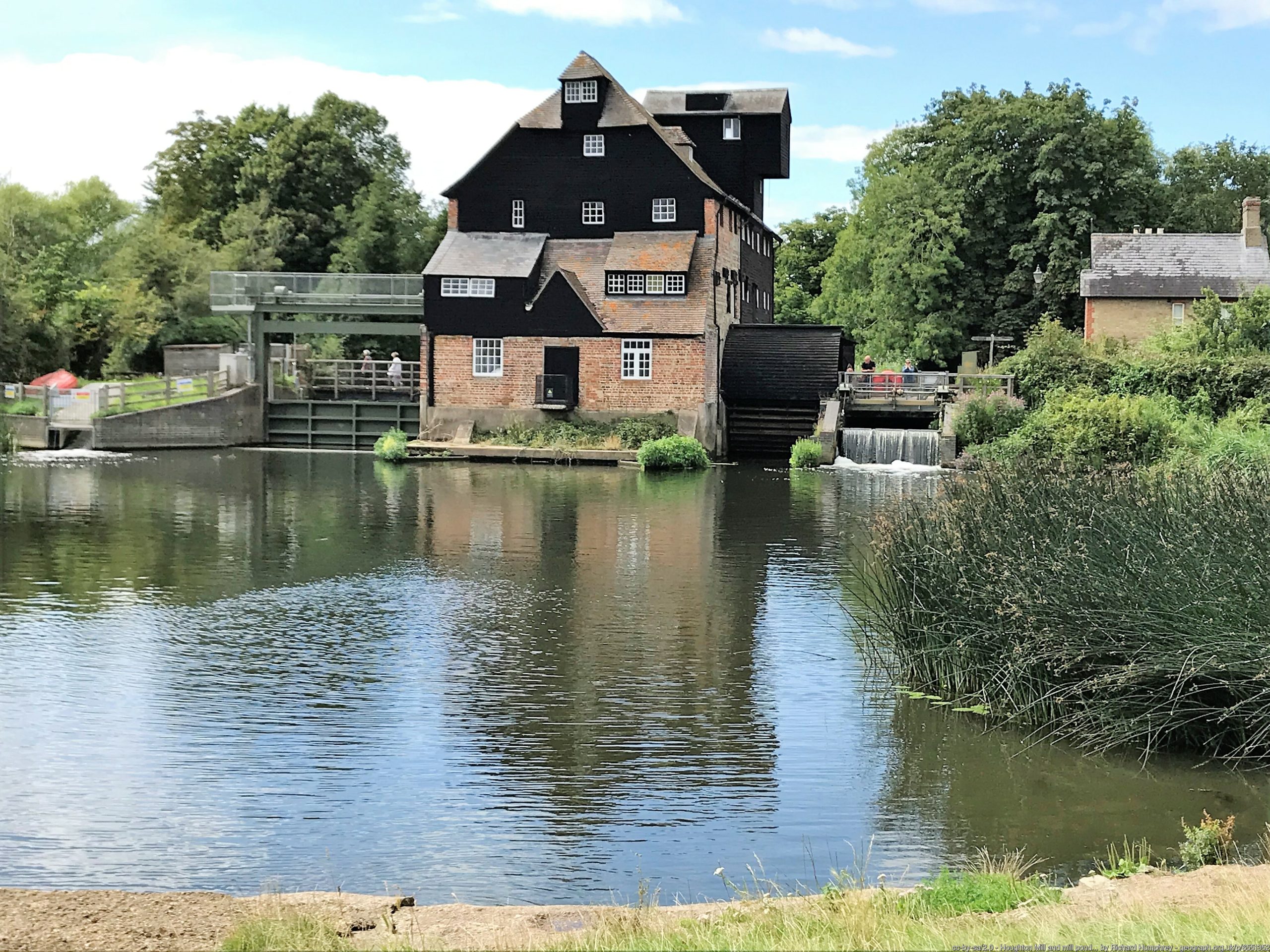
Houghton Mill is a working 17th-century water mill in the River Great Ouse at Houghton. It is the only remaining water mill in Huntingdonshire and the last surviving mill on the Great Ouse. A mill on or near this site was operated by Ramsey Abbey from around 974. The present mill replaced one burnt down in the 17th century. It was given to the National Trust in the 1930s. The Trust uses it to mill wheat from its Wimpole Estate.
4. St Ives Bridge and the Chapel of St Ledger
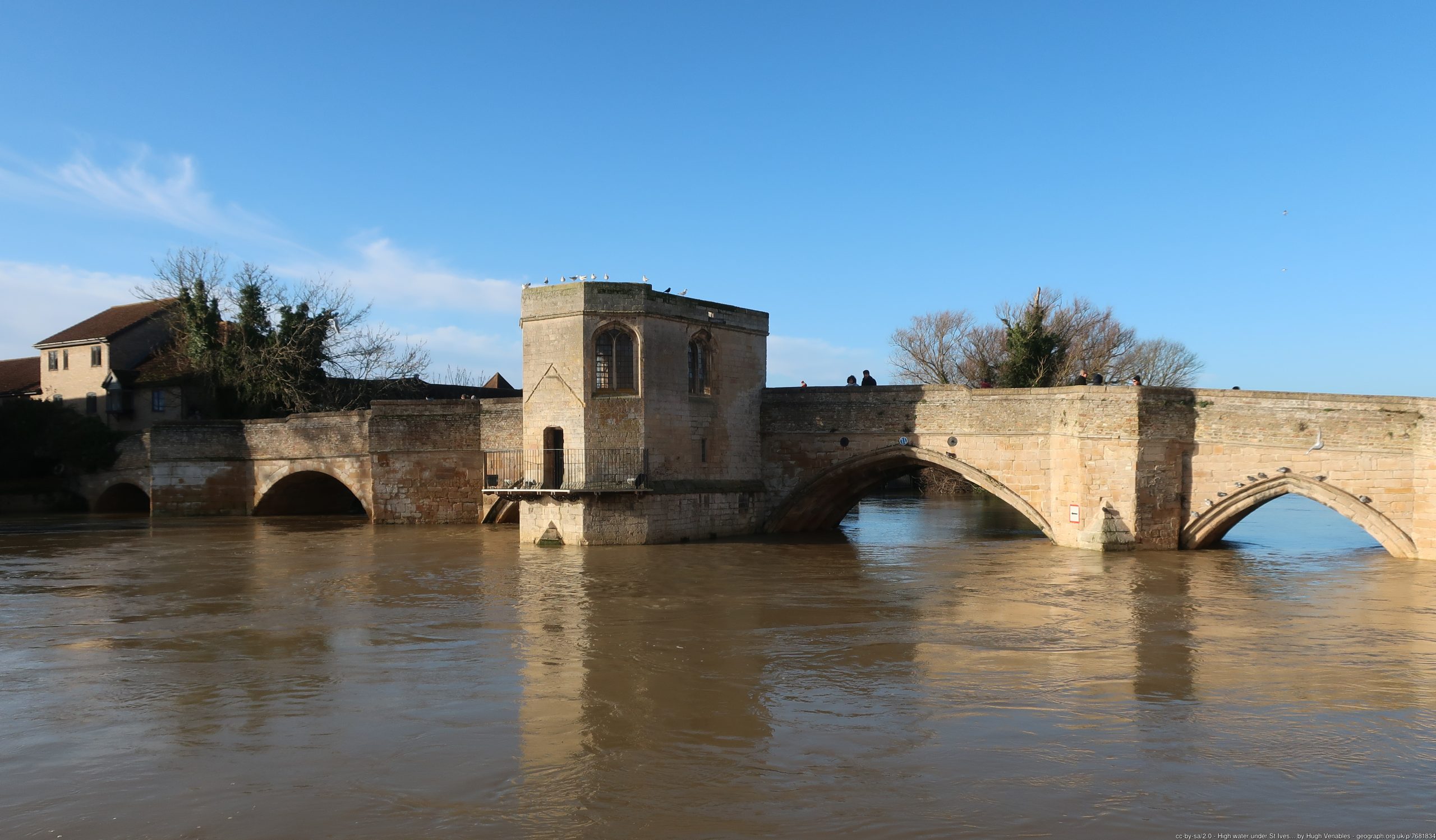
St Ives owes its existence to the location of a ford across the Great Ouse here. The monks of Ramsey Abbey built a wooden bridge across the river around 1107. This was replaced by the present stone arch bridge around 1415-1426, the bridge chapel dedicated to St Ledger being added shortly afterwards. It is one of only four bridges in England to incorporate a chapel. After many centuries of use as a toll house, an inn and private residence, the chapel was restored and rededicated in the 1930s.
5. Elton Hall
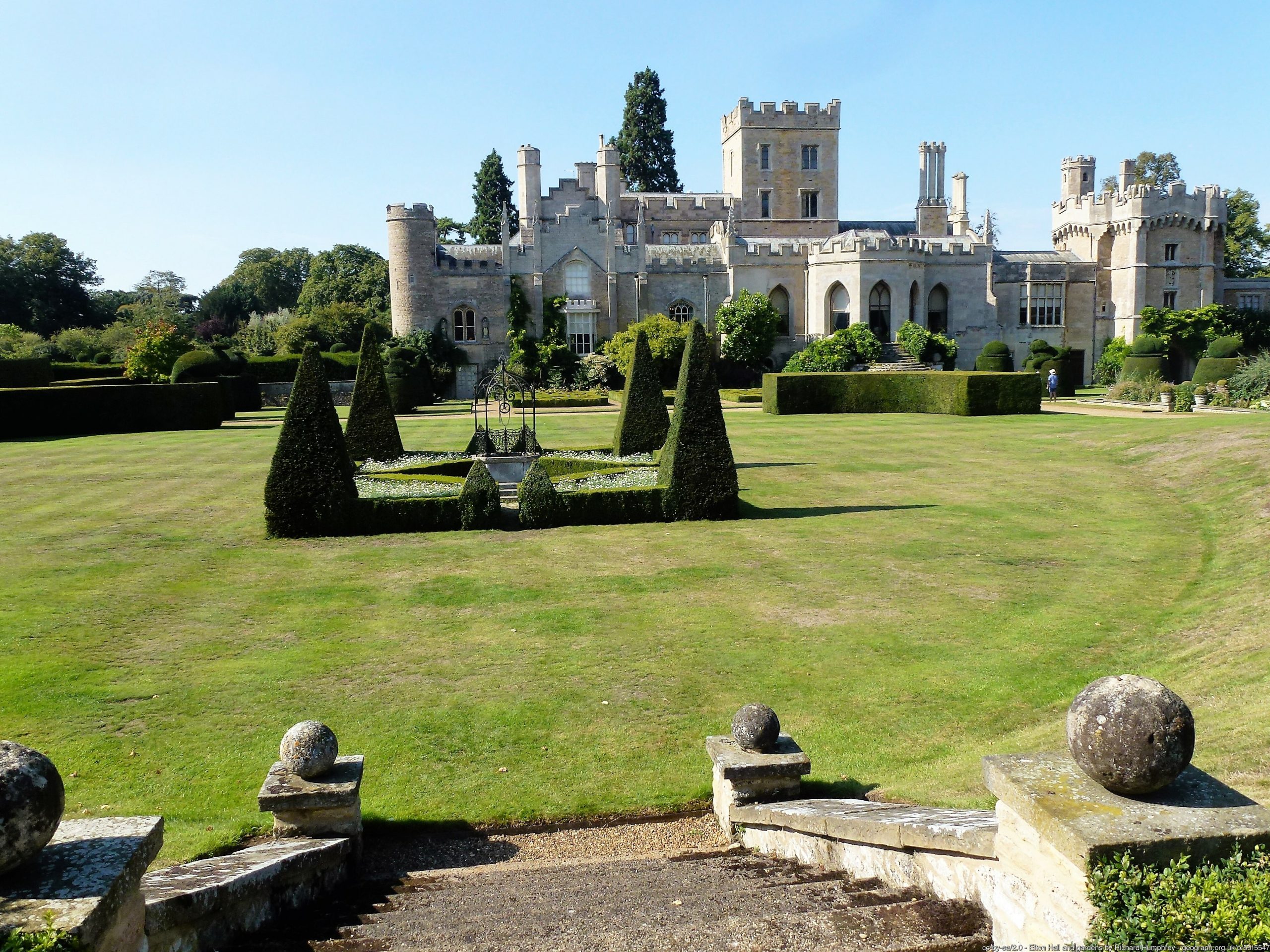
In the north-west of Huntingdonshire, to the south of the village of Elton, lies Elton Hall. Originally built by Sir Richard Sapcote in the 15th century, the hall has been expanded and altered several times over the succeeding centuries. The drawing room was created from the medieval chapel in the mid-18th century. The south front incorporates the 15th-century tower and chapel. The hall has notable furniture and paintings by Gainsborough, Reynolds and Constable. The county border runs along the south-facing wall of the hall, leaving the hall itself in Huntingdonshire, whilst the Victorian formal gardens lie in Northamptonshire. The stretch of border represents a former stream, either diverted at the construction of the hall or initially used as a water feature and later filled in.
6. Holy Trinity Church, Orton Longueville
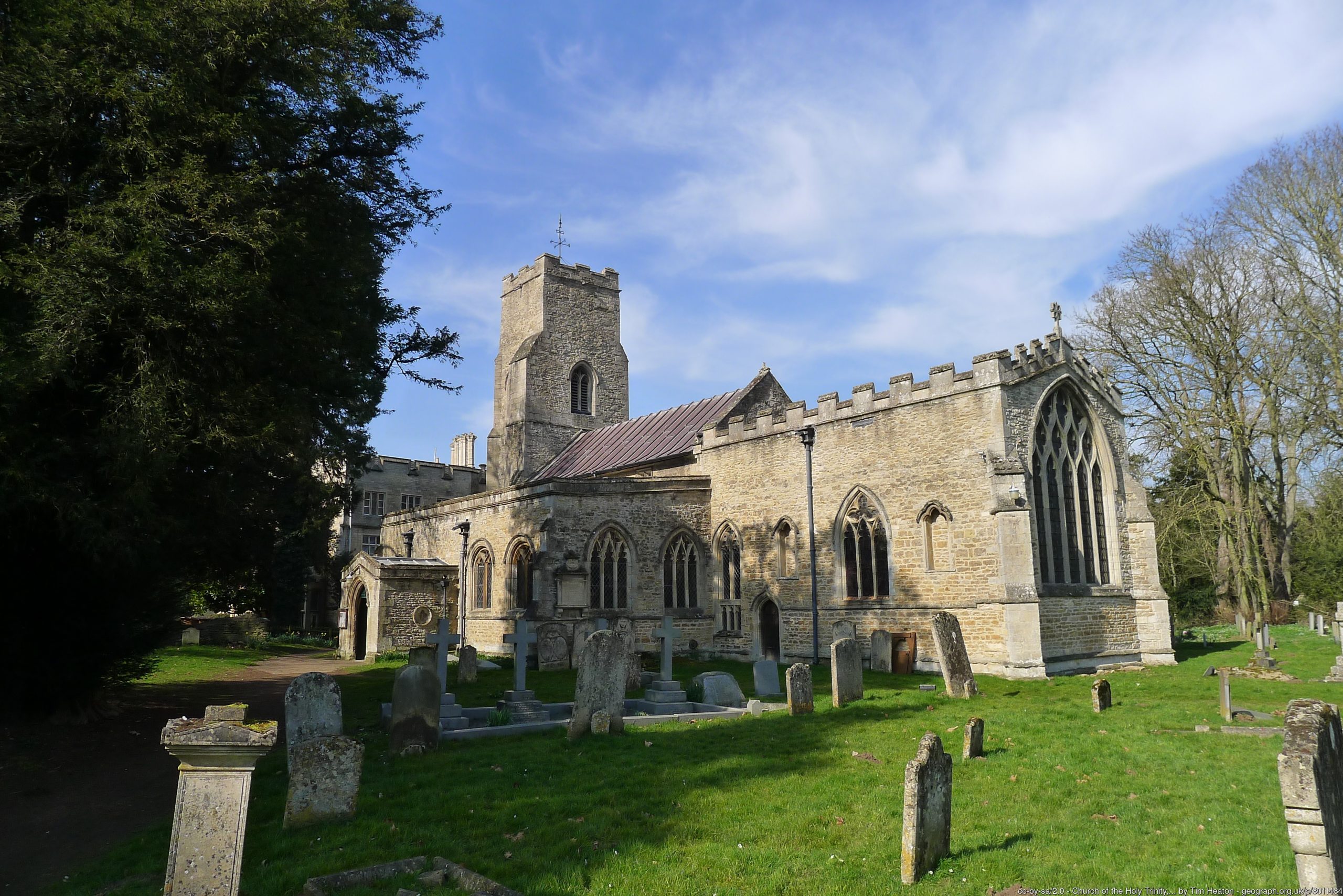
From 1967, the ancient Hunts villages of Orton Waterville and Orton Longueville found themselves designated part of ‘Orton’ township in the new town expansion of Peterborough. Nonetheless, they both retain a village identity and atmosphere, with many ancient buildings. The Holy Trinity Church is a Grade I Listed building in Orton Longueville. A church was mentioned here in Domesday though the present church dates from the 13th century. There is the remains of a St Christopher in its traditional place on the north wall of the nave. Superstition of the day would have it that a glance at this before the traveller left on a journey would protect them whilst travelling.
7. Farm Hall, Godmanchester
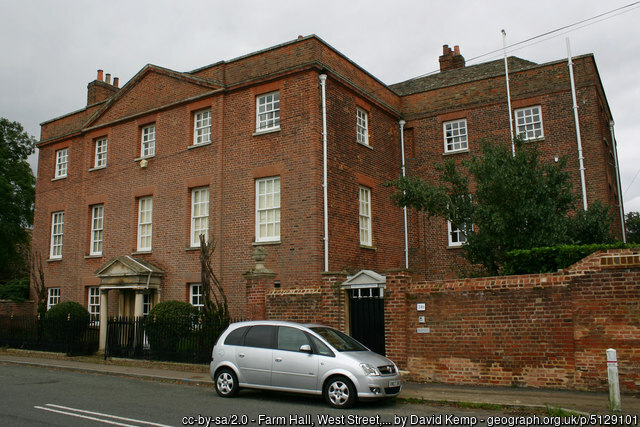
Built in 1746 for Charles Clark, Recorder of Huntingdon, Pevsner regards Farm Hall as the finest house in Godmanchester. At the end of World War II it housed Operation Epsilon, a program in which Allied forces detained ten German scientists (including Otto Hahn and Werner Heisenberg) who were thought to have worked on Nazi Germany’s nuclear program. They were interned at Farm Hall, which was bugged for the purpose, from July 1945 to January 1946. The primary goal of the program was to determine how close Germany had been to constructing an atomic bomb by listening to their conversations.
There are, of course, many other wonders of Huntingdonshire. Notable mentions include The Old Bridge connecting Huntingdon and Godmanchester, Samuel Pepys House in Brampton, Hinchingbrooke House, Buckden Palace and Bodsey House. What would be your choices?
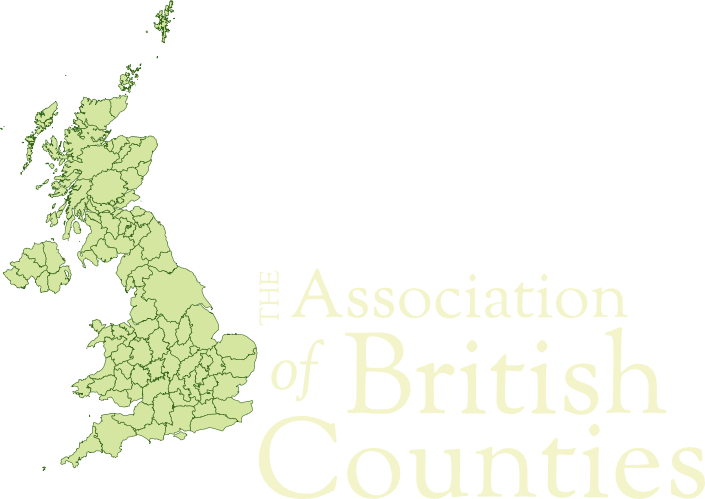
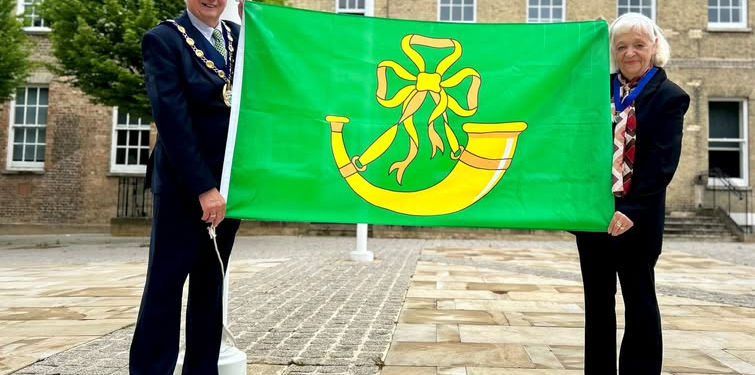
One thought on “Hunts Day: Seven Wonders of Huntingdonshire”
Happy Hunts Day! Literally the land of my father. 🙂